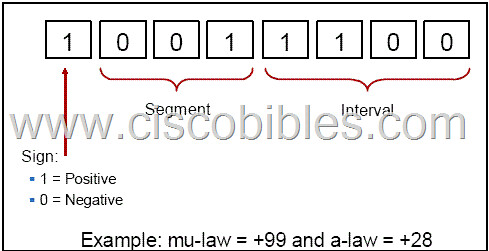|
This page was exported from Free Cisco Training & Resources - Certification Exam Preparation
[ https://www.ciscobibles.com ] Export date: Tue Nov 11 10:37:22 2025 / +0000 GMT |
CCNA Voice Bible (640-460) - Voice FundamentalsQuestion 1 Which is the best description of time-division multiplexing? A. A channel is assigned an exclusive slice of the overall frequency of the circuit for the entire time of its operation. Answer: B Question 2 Which type of voice port will allow the gateway to terminate 23 or 30 circuits from the PSTN or a PBX? A. FXO Answer: C Explanation: The ISDN E1 PRI has 32 timeslots (channels). Each timeslot is 8 bits and has a data rate of 64,000 bits/second. Timeslot 0 is used for frame synchronization and alarms. Timeslot 16 is used for signaling so we can use 30 timeslots to carry calls. The T1 PRI only has 24 timeslots (channels). Timeslot 0 is used for frame synchronization. Unlike E1 (which uses a dedicated timeslot for signaling) T1 Channel Associated Signaling (CAS) “steals” the 8th bit of the sixth frame for signaling information so we can use 23 timeslots for voice. Question 3 Refer to the exhibit.
A. Encoding Answer: A Explanation: There are many definitions about voice encoding but I would like to refer it as the process of translating digital numbers into binary values. It makes us remember the concept more easily. Each time we see a binary-conversion process, we can say it is the encoding step ^^. Questions 4 Refer to the exhibit.
Which step of digitizing analog signal does this represent? A. Signal sample Answer: A Explanation: As you can see in the picture, an analog waveform is sampled to covert into a numeric value by a device described in question 2's explanation. This process is called Pulse-Amplitude-Modulation (PAM). The results of this step are often decimal numbers. Later, these decimal numbers are converted to binary numbers by the encoding process. Question 5 What is a numbering plan? A. It describes the path from one endpoint to another. Answer: E Explanation A numbering plan is a world-wide standard to organize and locate telephones all around the world. In CCNA Voice, you often read about E.164 standard. Question 6 Which three of these are part of the e.164 number in the ITU-T numbering plan for geographic areas? (Choose three) A. SANC.SPID Answer: C D F Question 7 Which statement is true concerning time-division multiplexing? A. Time-division multiplexing transmits one voice signal at a time over a four-wire path. Answer: C Question 8 The Point North Company has a few slow links in its voice and data network. Which two techniques can be used to reduce delay in voice transmission? (Choose two) A. FIFO queuing Answer: C D Question 9 What is required to convert a G711ulaw call to G729? A. Voice Termination resources Answer: D Explanation: Transcoding compresses and decompresses voice streams to match endpoint-device capabilities. Transcoding is required when an incoming voice stream is digitized and compressed (by means of a codec) to save bandwidth, and the local device does not support that type of compression -> D is the correct answer. Question 10 Which codec is less processor intensive? A. G729 Answer: B Question 11 A PRI (Primary Rate Interface) is a telecommunication standard used in the Integrated Services Digital Network or ISDN, for carrying multiple DS0 voice and data transmissions between two physical locations. PRI was developed specifically for industrial or large quantity users. PRI is an industrial ISDN line while the Basic Rate Interface, or BRI, is used to cater to home and small enterprises. Which three characteristics apply to ISDN PRI? (Choose three) A. PRI offers 20 B channels and 1 D channel Answer: B C D |
|
Post date: 2010-07-10 17:26:10 Post date GMT: 2010-07-10 09:26:10 Post modified date: 2010-07-10 17:26:10 Post modified date GMT: 2010-07-10 09:26:10 |
| Powered by [ Universal Post Manager ] plugin. HTML saving format developed by gVectors Team www.gVectors.com |

